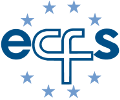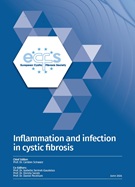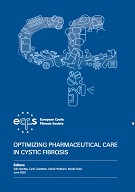
Optimizing pharmaceutical care in cystic fibrosis
Over the last decades, major advances have occurred in the care and treatment of cystic fibrosis (CF) leading to more people with CF living longer, reaching adulthood and enjoying a better quality of life. Advances have gone even more quickly recently with new very innovative genomically-guided therapies becoming available for many patients. Over the last years, the European Cystic Fibrosis Society has published three books describing how to give the best care at different critical ages of life, from early years to adolescence and adulthood. This new book is devoted to the transversal issue of pharmaceutical care in CF.
The goal of this book is not to go into details on how to treat each condition seen in CF which can be found in many other publications, but to inform on issues very specific to CF when using pharmaceutical drugs. For example, the very unique pharmacokinetics seen in CF, the preferred regimens for antibiotic infusions, or the challenges of hospital or home parenteral administrations. The specificities of nebulized delivery, the interactions between
medicines used in CF, the evaluation and management of frequent drug reactions, adherence and new challenges in the management of many drugs during pregnancy or breastfeeding are covered. Chapters are also devoted to new precision medicines, from development, to access and evaluation in real life.
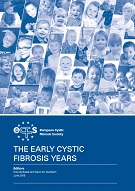
The early cystic fibrosis years
The first few years of life are critically important for people and families with cystic fibrosis (CF) to lay
the foundations for future health. Early gains in these pre - school years have a profound impact on later wellbeing and quality of life.
With an early diagnosis, linked with intensive follow - up and treatment, many of the downstream negative consequences of CF can be delayed, diminished or even prevented.
The aim of this book is to provide a resource for healthcare professionals that will support them in this challenging task. This book covers a wide spectrum of issues that we face in caring for pre - school infants and children. The book reflects on new-born screening and how to deal and cope with the diagnosis. A number of chapters provide clear direction on the follow - up and treatment of patients, with particular attention
to good nutrition, prevention and treatment of bacterial infection and coping with the psychological impact of the disease. A chapter on unusual complications complements information on optimal treatment. We hope that CF healthcare professionals will find this book a useful reference for the day to day management of these young patients.
E-Book version freely available
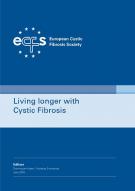
ECFS Book - Living longer with Cystic Fibrosis
Living longer with Cystic Fibrosis, the title in itself is already a reason to celebrate. Indeed, in developed countries the number of adults with CF now outnumber the children with CF. Dominique Hubert and Nicholas Simmonds identified the necessary contributors to provide an overview of the evidence base in the literature but to also to share their personal experience with the readers. The final result has become a highly interesting and easy-to-read book. With the continuously increasing number of adults with Cystic Fibrosis in every country, there is great need for training young internal medicine specialists in the complex care of adults with Cystic Fibrosis. We hope that this book will help to attract more adult care physicians to the field of CF.
E-Book version freely available
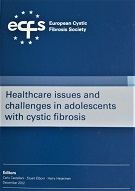
Healthcare issues and challenges in adolescents with cystic fibrosis
Cystic Fibrosis is a disease where parents, patients and clinical team members have to overcome many barriers to ensure optimal treatment is available for individual patients. Adolescence is perhaps one of the most challenging times for people with cystic fibrosis and is in general an under-researched area in the field. The ambition was to cover a range of healthcare issues relevant to young adults in order to provide cystic fibrosis teams and others associated with cystic fibrosis care with a resource to consult when considering some of the difficult issues during adolescence.
We hope that this book will be a useful manual for cystic fibrosis teams. We also anticipate that families and young people with cystic fibrosis will find this book of value.
E-Book version freely available

The early cystic fibrosis years
The first few years of life are critically important for people and families with cystic fibrosis (CF) to lay
the foundations for future health. Early gains in these pre - school years have a profound impact on later wellbeing and quality of life.
With an early diagnosis, linked with intensive follow - up and treatment, many of the downstream negative consequences of CF can be delayed, diminished or even prevented.
The aim of this book is to provide a resource for healthcare professionals that will support them in this challenging task. This book covers a wide spectrum of issues that we face in caring for pre - school infants and children. The book reflects on new-born screening and how to deal and cope with the diagnosis. A number of chapters provide clear direction on the follow - up and treatment of patients, with particular attention
to good nutrition, prevention and treatment of bacterial infection and coping with the psychological impact of the disease. A chapter on unusual complications complements information on optimal treatment. We hope that CF healthcare professionals will find this book a useful reference for the day to day management of these young patients.
E-Book version freely available

ECFS Book - Living longer with Cystic Fibrosis
Living longer with Cystic Fibrosis, the title in itself is already a reason to celebrate. Indeed, in developed countries the number of adults with CF now outnumber the children with CF. Dominique Hubert and Nicholas Simmonds identified the necessary contributors to provide an overview of the evidence base in the literature but to also to share their personal experience with the readers. The final result has become a highly interesting and easy-to-read book. With the continuously increasing number of adults with Cystic Fibrosis in every country, there is great need for training young internal medicine specialists in the complex care of adults with Cystic Fibrosis. We hope that this book will help to attract more adult care physicians to the field of CF.
E-Book version freely available

Healthcare issues and challenges in adolescents with cystic fibrosis
Cystic Fibrosis is a disease where parents, patients and clinical team members have to overcome many barriers to ensure optimal treatment is available for individual patients. Adolescence is perhaps one of the most challenging times for people with cystic fibrosis and is in general an under-researched area in the field. The ambition was to cover a range of healthcare issues relevant to young adults in order to provide cystic fibrosis teams and others associated with cystic fibrosis care with a resource to consult when considering some of the difficult issues during adolescence.
We hope that this book will be a useful manual for cystic fibrosis teams. We also anticipate that families and young people with cystic fibrosis will find this book of value.
E-Book version freely available
